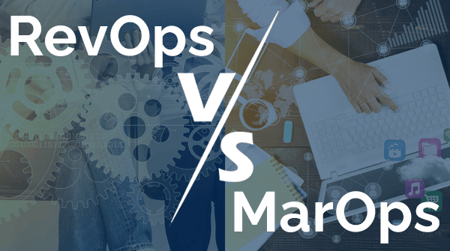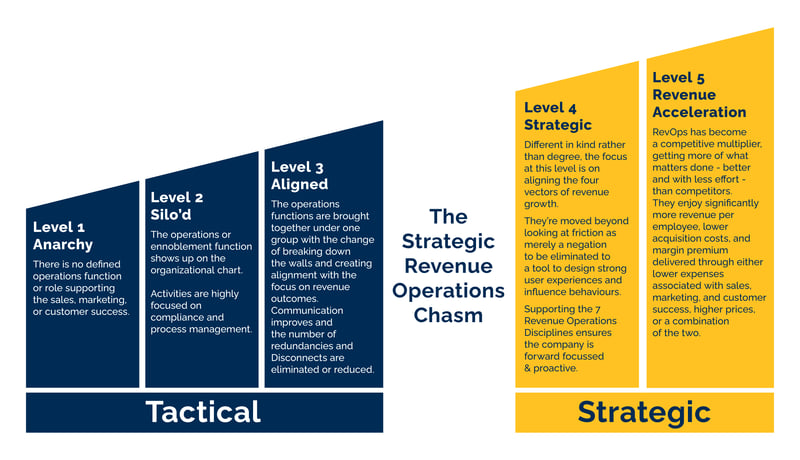 We live in a time where there are many buzz words with many different definitions that depend upon who you ask. It can be confusing for a number of reasons, especially because these definitions not only vary, they are often fluid and evolving.
We live in a time where there are many buzz words with many different definitions that depend upon who you ask. It can be confusing for a number of reasons, especially because these definitions not only vary, they are often fluid and evolving.
One of the most ambiguous delineations is between Marketing Operations (MarOps) and Revenue Operations (RevOps). Part of the issue is that these are fairly new fields, so roles and responsibilities have not remained static, especially with the introduction of new tech. And, as we all know, even five or ten years can make a great deal of difference in tech capabilities.
So, to discuss the difference between MarOps and RevOps, we should first define each term to be sure we’re all working from the same definition. To paraphrase Julie Andrews in The Sound of Music, the beginning is a very good place to start.
What is MarOps?
MarOps creates and manages the framework—the systems, data, and processes—to make marketing scalable and revenue-generating. MarOps develops and implements an optimized marketing strategy and works with sales ops and sales to ensure the generation of quality leads.
What is RevOps?
We devoted a whole blog post to this, but in short, it’s the strategic coordination of all market-facing, revenue-oriented systems, processes & activities designed to increase velocity, optimize throughput, and reduce the friction (effort) required to solve for the customer & achieve revenue objectives.
The “Lift definition” differs a bit from some others, in that you’ll often see definitions that talk about “breaking down silos” to unify all operational functions, often defined as marketing, sales, analytics, service, customer success, and finance. While we agree that the aim of RevOps is to make the overall organization more efficient, we want to note that we avoid using the term “silos” in our definition because we don’t think silos in their own right are automatically bad. A well-functioning company will inevitably have some degree of separation between departments. The issue really arises when velocity and alignment between departments aren’t united through an overarching strategy and efficient processes. That creates friction.
The RevOps objective is for each department to have a differentiated role while they all work together to increase revenue.
TL; DR - How do MarOps and RevOps differ?
To put it in a nutshell, they’re similar concepts—streamlining processes, aligning departments, and decreasing friction—but RevOps is more comprehensive, in that it applies to all operational functions, as opposed to simply aligning marketing and sales.
How do you know if you need RevOps?
Sadly, there’s no one-size-fits-all indicator, just as there’s no one one-size-fits-all approach to RevOps. That said, as this blog outlines in more detail, there are two ways to increase revenue: increasing force (doing more) and reducing friction, which is created by complexity. At some point, working harder not only doesn't contribute to success, it gets in the way of it.
So, if you’re at the point where working harder (or increasing force) isn’t working anymore, your force and friction are probably out of balance. The key to sustaining growth, and making growth manageable and predictable, is to manage the friction.
One note of caution here: Revenue Operations is not about the tech stack. Many people mistakenly think they can implement the right tech stack and all their problems will be solved. Remember that the business process should always drive the tech stack, as opposed to vice versa—which is unfortunately, more common than you’d think.
How do you implement RevOps?
To go back to that no “one-size-fits-all approach,” it depends on the outcomes you’re looking for.
There are two types of revenue operations organizations. One takes a more tactical view of the role, and the other is more strategic.
The level of performance you should aim for is dependent on the outcomes you desire and the context of your business.
But for an overview, here’s a breakdown of the difference:

You’ll notice the chasm between Level 3 (Aligned) and Level 4 (Strategic). The hardest jump to make is across that chasm from tactical to strategic. But honestly, what’s being done on both sides of the chasm isn’t that different. The real difference is how organizations approach what needs to be done and the mindset they bring to those activities.
The main differentiator is that tactical RevOps views friction as something only to be removed or minimized, while strategic RevOps views it as something to be managed.
If you’d like a deeper dive into each level and what they mean, check out this blog post.
What else do I need to consider about RevOps?
Of course, successfully launching and implementing RevOps is not something to be taken lightly, but the impact of the investment can be amazing. That’s because each department will have a differentiated role, but will be aligned in terms of velocity and strategy, working together to increase revenue. If you’d like to explore the process more, we outline how to do it successfully in this webinar.


